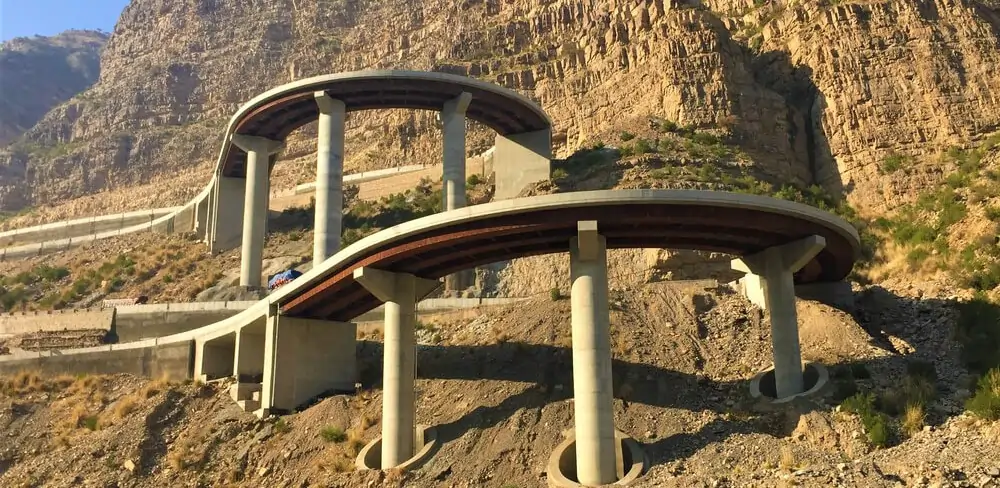ISLAMABAD 02 September 2024 (TDI): Nature has blessed Pakistan with an abundance of natural beauty and scenic landscapes. From dunes and deserts to hilly stations and mountains, there is nothing Pakistan does not possess.
Regarding hilly stations, it’s hard to ignore a pearl in the Dera Ghazi Khan District of Punjab: Fort Munro. Perched at 6,470 feet above sea level, Fort Monroe is a part of the captivating Suleman mountain range.
Located 85 kilometres from Dera Ghazi Khan city, Punjab, and about 185 kilometres from Multan, it can also be reached from Loralai, Balochistan.
The area was formerly known as Tuman Leghari, named after the indigenous Leghari tribe. Once, it was also called Anari Mool, a Balochi word that translates as the ‘hilltop with pomegranates’.
The area’s local inhabitants are known as the Legharis who are direct descendants of an ancient Baloch tribe. Despite the area’s lack of extensive preservation, it still retains intriguing remnants of its rich historical past.
Nestled in the heart of Pakistan’s Sulaiman Mountain range, Fort Munro is a serene hill station that offers a refreshing escape from the heat of the plains.
This picturesque spot is part of a much larger and historically significant mountain range that stretches across central Pakistan, running southward for about 450 kilometres (280 miles) from the Gumal Pass to just north of Jacobabad.
The Sulaiman range acts as a natural barrier, separating the provinces of Khyber Pakhtunkhwa and Punjab from Balochistan.
The crown jewel of the range is undoubtedly the twin peaks known as Takht-i Sulaiman or Solomon’s Throne. In the southern part of the range, west of Dera Ghazi Khan lies the tranquil hill station of Fort Munro.
Echoes of the Past: Fort Munro’s Colonial Charm and Geological Wonders
The area has a rich history dating back to ancient times. A unique story attributed to the area dating back approximately 65 million years says that a massive asteroid hit the area and this led to the extinction of dinosaurs.
A thin grey-brown line on the rocks which marks the Cretaceous-Paleogene (K-Pg) boundary, formerly known as the K-T boundary, serves as a critical geological marker of this event.
Research on one of the exposed rock layers has linked it to the period when the largest land mammal, Baluchitherium, roamed the Earth.
Additionally, within the same sedimentary rock mass, ancient ‘walking whales’ were unearthed by local and US palaeontologists which highlights the region’s rich and diverse paleontological significance.
Fort Munro gained prominence during the British colonial era in the late 19th century. Before its colonial development, the region was known as Tuman Leghari.
In 1886, Sir Robert Groves Sandeman discovered the area and named it Fort Munro, in honour of Andrew Aldcorn Munro, a Scottish officer in the British Army who later became Commissioner and Superintendent of the Derajat and Multan Divisions.
During the British administration, Fort Monroe served as a summer headquarters for the Commissioner of Multan.
This period saw the construction of several colonial buildings, including Sandeman Lodge, the Commissioner’s House, and the District Commissioner’s Office.
A small Christian cemetery near the DCO House, with its few graves, still serves as a reminder of the British presence.
A Haven in the Hills: the Serene Beauty of Fort Munro


Often referred to as the ‘Murree of South Punjab,’ Fort Munro is the perfect getaway for those seeking respite from the sweltering summer heat.
t the summit of Fort Munro, you’ll find the Commissioner’s House, the Deputy Commissioner’s House (Munro’s Lodge), a regional court, and remnants of a historic fortress.
The colonial-era residence of the Political Assistant (PA), known as Sandeman Lodge, is also located here.
With its expansive lawns and a well-maintained billiards room, Sandeman Lodge offers a peaceful retreat for visitors. Nearby, there is a small cemetery dating back to the British era, containing five graves.
Just outside the PA house stands a monument from 1950, commemorating the union of various Balochi tribes.
The names of prominent tribal leaders, including those of the Mazaris, Gurchanis, and Legharis, are engraved on its stone surface. A flagpole beside the monument is traditionally hoisted whenever the PA is in residence.
Fort Munro also offers several walking trails that wind through its verdant valleys and rugged cliffs, providing opportunities to enjoy sweeping views of the mountain range.

The picnic spots near Dames Lake are popular among tourists, who relax in the cool shade of the surrounding orchards. However, the lake’s size varies throughout the year, shrinking to a pond depending on the rainfall.
In conclusion, Fort Munro, the only hill station in southern Punjab, is a place to behold. Although it is not too well-preserved, the area still holds onto the remnants of its rather interesting past.
With its mesmerising views and cool weather, the hill station attracts many people for short stays during the hot summer. The slow-paced rural life in the area draws numerous visitors each year.
The writer is working for The Diplomatic Insight



